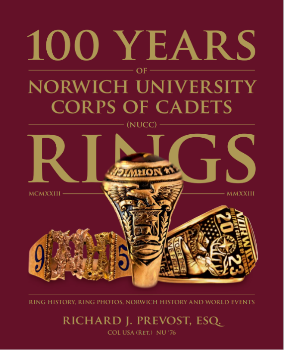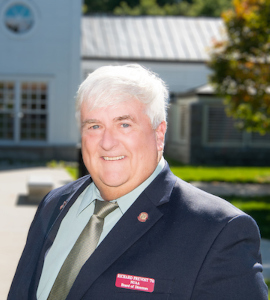|
100 Years of Norwich University Corps of Cadets Rings is temporarily unavailable.
The book has been very popular and our first two print runs have sold out.
Bookmark or favorite this space for details (and link) of when the book will be available for direct sale from Amazon.
|

Norwich class rings are prized possessions, meticulously designed and rigorously earned. The Corps of Cadets ring tradition began in spring 1923, when one was created for the graduating class. In time, ring design and presentation shifted to the junior year.
Richard Prevost, ’76 spent more than a year researching the history of the NUCC tradition in preparation for the 2023 ring centennial. A lovingly written and illustrated 570-page book, 100 Years of Norwich University Corps of Cadets (NUCC) Rings includes photos of rings in the Sullivan Museum collection as well as images contributed by the alumni that wear them. In addition to depicting each ring, Richard includes reflections on the significant events impacting Norwich, the nation and the world that influenced the design elements of each class ring.
Price: $100.00 - plus $20 shipping
Net proceeds will benefit Norwich’s Spirit of the Ring Fund.

Richard Prevost and his wife, Mary Ellen, live in Springfield, Virginia. They are ardent supporters of Norwich University and its values. Richard is a 1976 Norwich graduate, former President of the NU Club of Washington, DC and currently serves on the Board of Directors of the Norwich University Alumni Association. He and Mary Ellen have four adult children.
Reviews for 100 Years of Norwich University Corps of Cadets (NUCC) Rings: